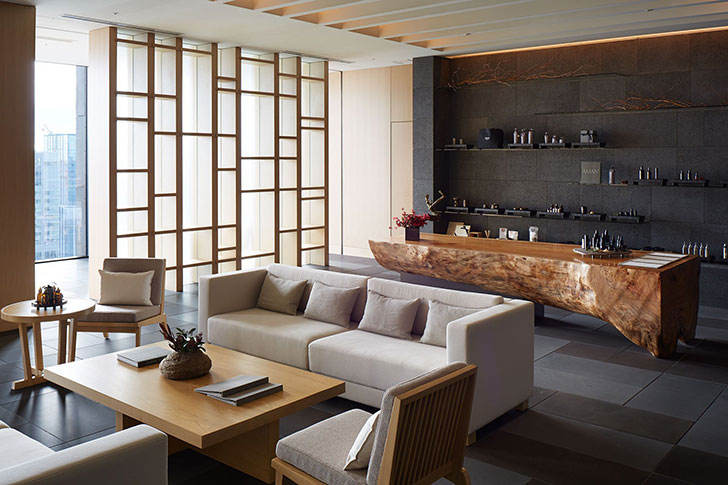The Japanese are truly a unique people with their own traditions and philosophy, which significantly affect the design of their homes. The Japanese style in the interior attracts with its simplicity, naturalness, and striving for minimalism. It amazes with the lightness and freedom of space. But behind the apparent asceticism and severity, there is a deep oriental philosophy, the desire to cognize and realize oneself. Knowing the rules and characteristics of the Japanese interior design, you can recreate the Asian style on your own at any home.
Below are some features of the Japanese interior design that will help you repeat the Japanese style in your home design.
Traditions
The appearance of a Japanese home has been formed over the centuries under the influence of numerous factors. The main trouble in Japan is earthquakes that can raze a house in a matter of minutes. To avoid this, the walls have long been made prefabricated without massive partitions in the room.
High population density plays an important role in interior design. Hence the love for brevity and minimalism. In search of the long-awaited peace and solitude, the Japanese are trying to free up space by removing unnecessary things to visually expand the room.
The last factor is a philosophy and national traditions, according to which what is happening in the outside world is vanity and isn’t worth attention. Spacious, light rooms with a minimum of furniture are best for contemplation and meditation.
Peculiarities
The three main peculiarities of Japanese interior design are spirituality, brevity, and minimalism. Compliance with these principles helps to cope with the organization of empty space. The main features of the interior in Japan also include:
- natural motives
- use of natural materials
- natural colors
- low furniture of regular geometric shapes
- lack of walls
- minimum decor
- diffused light
Materials
When creating an interior in the Japanese style, you should try to use natural materials like wood, bamboo, natural stone, paper, silk, cotton, and clay. Artificial materials are not welcome.
Floor finishing
In living quarters, the Japanese walk barefoot. During meals or conversations, they sit on the floor, so floor finishing is an essential part of Japanese interior design. The most common finish material is natural wood.
To keep the feet comfortable, floors in traditional Japanese homes are often covered with mats or tatami(reed mats stuffed with rice straw). Another finishing option is ceramic or stone tiles. In this case, you should think about the heating system in advance.
Walls finishing
A unique feature of the Japanese interior is the absence of internal partition walls. Instead, they use lightweight structures made of fabric, bamboo, or thick rice paper on a wooden frame. They help to zone the room. If you want something more modern, you can replace walls with sliding glass walls. They look modern and ensure better soundproofing than paper structures. If you don’t want to ruin the walls, just trim them with fabric, wood, or stone.
Colors
The desire for nature is traced even in the colors of the interior. It consists of light soothing colors. The dominant shades are brown, cream, sand, ivory, coffee, menthol, and olive.
Furniture
In a traditional Japanese home, there is no place for unnecessary things and pieces of furniture. The furniture should be not high, with smooth monochromatic surfaces, and regular geometric shapes. A small table for tea ceremonies surrounded by seating cushions will look extremely authentic. In the bedroom, you can place a mattress with a roller or tatami instead of a bed. A traditional ofuro bathtub and a bowl-shaped washbasin will be suitable for the bathroom.
Light
An important feature of the Japanese interior is the creation of cozy diffused lighting. Instead of chandeliers and directional light sources, you should use akari lamps with rice paper and bamboo shades. They help highlight specific objects, transform the surrounding space, and make zoning easier.
Decoration
Unlike furniture, the choice of decor items is quite rich. In the traditional Japanese house, you can often find a special place for accessories, designed in the form of a wall niche. Porcelain dishes, a set for a tea ceremony, prints, lanterns, netsuke figurines, and bonsai trees will vary the minimalistic interior and help to recreate the mysterious atmosphere of the East.


